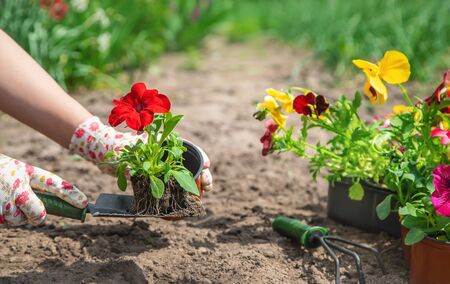Introduction: Year-Round Garden Care in the UK
Gardening in the UK is a delightful journey through ever-changing seasons, each bringing its own charm and challenges. The British climate is famously unpredictable—mild winters, damp springs, and the occasional heatwave or downpour in summer mean that no two months are exactly alike. This unique weather pattern calls for a thoughtful approach to garden care, tailored to each month’s conditions. By understanding what your garden needs throughout the year, you can keep your outdoor space vibrant and healthy in every season. Whether you have a cosy city courtyard or a sprawling country plot, planning ahead with monthly gardening tasks ensures your plants thrive, your borders stay beautiful, and your green space remains a source of joy all year round.
Spring Awakening: March to May
As the days grow longer and the chill of winter fades, spring is the perfect time to breathe new life into your garden. From March through May, your outdoor space needs a little extra attention to set the stage for a thriving year. Here are some essential tips for clearing, pruning, sowing seeds, and encouraging new growth as British gardens awaken.
Clearing and Tidying Up
Start by gently clearing away winter debris such as fallen leaves, twigs, and any dead plant material. This not only tidies up the garden but also reduces the risk of pests and diseases. Be careful not to disturb emerging shoots or hibernating wildlife.
Pruning for Healthier Plants
Early spring is ideal for pruning many shrubs and perennials before active growth begins. Roses, hydrangeas, and buddleias benefit from a good trim now. Cut back damaged or crossing branches to encourage strong new stems and better flowering.
Pruning Guide: What to Prune Each Month
| Month | Shrubs/Plants to Prune |
|---|---|
| March | Roses, Buddleia, Dogwood |
| April | Hydrangea, Lavender (lightly), Forsythia after flowering |
| May | Spring-flowering shrubs after blooms fade |
Sowing Seeds and Planting
With the soil gradually warming up, its time to sow hardy annuals outdoors, such as sweet peas, poppies, and cornflowers. Indoors or in a greenhouse, start off tomatoes, courgettes, and bedding plants. Check seed packets for specific sowing advice suited to UK conditions.
Quick Reference: What to Sow in Spring
| Month | Vegetables & Flowers to Sow |
|---|---|
| March | Lettuce, Broad beans, Sweet peas (indoors) |
| April | Carrots, Beetroot, Sunflowers (under cover) |
| May | Courgettes, French beans (outdoors), Nasturtiums |
Encouraging New Growth
Add a layer of peat-free compost or well-rotted manure around your borders and fruit bushes to feed hungry plants as they come back to life. Mulching helps retain moisture and keeps weeds at bay. Don’t forget to water newly sown seeds during dry spells—spring weather can be unpredictable in the UK!
A Few Extra Tips for Spring Success:
- Keep an eye out for slugs and snails as temperatures rise.
- Aerate lawns with a fork or aerator if compacted.
- Tidy up patios and pathways with a good sweep.
- Clean out bird feeders and top them up regularly to attract helpful garden visitors.
This month-by-month approach ensures your British garden wakes up healthy and vibrant after winter’s rest.

3. Summer Flourish: June to August
Maintain Your Borders
During the British summer, borders burst into life. To keep them looking their best, regularly weed and mulch to retain moisture and suppress unwanted growth. Edge your borders for a neat finish and support taller plants with canes or stakes as needed.
Watering Efficiently
With dry spells becoming more common in UK summers, it’s essential to water wisely. Water early in the morning or late in the evening to minimise evaporation. Focus on the base of plants rather than the leaves, and use watering cans or soaker hoses to target roots directly. Consider installing a water butt to collect rainwater for sustainable gardening.
Deadheading for Continuous Blooms
Remove spent flowers from annuals and perennials such as roses and bedding plants. Deadheading encourages new blooms and keeps your garden looking fresh throughout the season. For shrubs, trim faded flower heads but avoid heavy pruning until autumn or winter unless necessary.
Preparing for Dry Spells
In anticipation of heatwaves or droughts, add a thick layer of organic mulch around your plants to lock in moisture and protect roots from temperature extremes. Check pots and containers daily, as they dry out quicker than borders. Move vulnerable containers into shadier spots if possible, and group them together to create a more humid microclimate.
Practical Tip:
If you’re heading off on holiday, ask a neighbour or friend to water your garden, or invest in automatic irrigation systems to keep everything thriving while you’re away.
4. Autumn Transition: September to November
As the leaves start to fall and temperatures begin to drop, autumn is a crucial period for garden preparation in the UK. These months are all about clearing away summer growth, planting for spring, and ensuring your plants are protected from early frosts. Below youll find practical advice to keep your garden thriving through the colder months.
Tidy Up Your Garden
Start by removing spent annuals, cutting back perennials that have finished flowering, and raking up fallen leaves. Keeping beds clear helps prevent pests and diseases overwintering. Leave some seed heads for wildlife if you wish to encourage birds into your garden.
Plant Spring Bulbs
Autumn is the ideal time to plant bulbs such as daffodils, tulips, crocuses, and hyacinths. Planting now ensures a colourful display when spring arrives. Refer to the table below for recommended planting depths and spacing:
| Bulb Type | Planting Depth (cm) | Spacing (cm) |
|---|---|---|
| Daffodil | 10-15 | 10-15 |
| Tulip | 15-20 | 8-12 |
| Crocus | 8-10 | 5-8 |
| Hyacinth | 10-15 | 10-15 |
Composting Tips for Autumn Leaves and Waste
This is a great time to boost your compost heap with plenty of fallen leaves, grass cuttings, and old plant material. Shredding leaves first will help them break down faster. Remember to balance green materials (like grass) with browns (like dried leaves) for efficient composting.
Protecting Plants from Early Frosts
The first frosts can catch gardeners off guard. Move tender plants indoors or into a greenhouse if possible. For those that must remain outside, use horticultural fleece or cloches for protection. Mulching around the base of shrubs and perennials also helps insulate roots against sudden cold snaps.
Quick Checklist for Autumn Garden Prep:
- Tidy borders and remove dead growth
- Plant spring-flowering bulbs at correct depths
- Add autumn waste to compost heap in balanced layers
- Protect vulnerable plants from frost with covers or mulches
- Clean and store tools before winter sets in
By following these steps each autumn, your garden will be well-prepared for the challenges of winter and ready to burst into life when spring returns.
5. Winter Watch: December to February
Garden Maintenance Tips for the Colder Months
Winter in the UK brings frosty mornings and shorter days, but your garden still needs some care. Start by clearing away fallen leaves and debris to prevent pests and diseases. Protect delicate plants by covering them with horticultural fleece or cloches, and insulate pots with bubble wrap or hessian. Avoid walking on frozen lawns to prevent damage, and keep pathways safe from ice by scattering sand or grit. Check fences, sheds, and garden structures for storm damage and make necessary repairs while growth is slow.
Caring for Wildlife in Your Garden
Wildlife faces tough times during winter, so lend a helping hand. Refill bird feeders regularly with high-energy foods like suet balls and sunflower seeds. Break the ice on birdbaths daily to ensure birds have access to water. Leave some areas of your garden untidy—piles of leaves or logs provide vital shelter for hedgehogs, frogs, and insects. If you have a pond, gently melt a hole in the ice to allow aquatic life to breathe.
Getting Ready for Spring’s Return
While growth slows in winter, it’s an ideal time to plan ahead. Prune dormant fruit trees and shrubs (except those that flower early) to encourage healthy spring growth. Clean and sharpen tools, wash pots, and organise your shed so everything is ready for action when the days get longer. Order seeds and summer-flowering bulbs now for the best selection. If you’re keen, start sowing hardy annuals indoors from late February onwards to get a head start on spring blooms.
Quick Checklist
- Clear leaves and debris
- Protect tender plants and pots
- Help wildlife with food, water, and shelter
- Repair structures and maintain tools
- Plan next season’s planting
A Little Effort Goes a Long Way
With thoughtful winter care, your garden will stay healthy through the chill and be ready to burst into life when spring arrives.
6. Monthly Checklist: What To Do and When
Keeping your garden in tip-top shape throughout the year can feel overwhelming, but with a clear month-by-month checklist, youll always know exactly what needs doing and when. Here’s a handy summary to help you stay organised, on track, and ensure your garden thrives whatever the weather.
January
Tidy and Plan
Clear away debris, check for frost damage, and browse seed catalogues to plan your planting schemes.
February
Prep for Spring
Prune shrubs, start chitting potatoes, and sow early seeds indoors such as sweet peas and tomatoes.
March
Sow and Feed
Sow hardy annuals outdoors, feed shrubs and fruit trees, and prepare beds by digging in compost or manure.
April
Plant Out
Plant out potatoes and onion sets, sow lawn seed if needed, and keep an eye out for late frosts.
May
Bedding and Maintenance
Plant summer bedding, stake tall perennials, and watch for pests like slugs and snails.
June
Deadhead and Water
Deadhead roses and annuals to encourage more blooms, mulch borders to retain moisture, and water regularly during dry spells.
July
Harvest and Prune
Harvest soft fruits, prune summer-flowering shrubs after they bloom, and continue regular deadheading.
August
Sow for Autumn
Sow autumn vegetables such as spinach and radishes, divide spring bulbs after flowering, and keep watering containers.
September
Tidy Up
Cut back faded perennials, collect seeds for next year, aerate lawns, and start planting spring-flowering bulbs.
October
Protect and Plant
Lift tender plants before frosts arrive, plant trees and shrubs while the soil is still warm, and rake up fallen leaves.
November
Prepare for Winter
Cut back remaining herbaceous plants, insulate pots from frost, clean tools, and check wildlife shelters are ready.
December
Rest & Review
Tidy borders if needed, enjoy any festive greenery from the garden, reflect on successes (and mishaps) of the year to help plan for next season.


